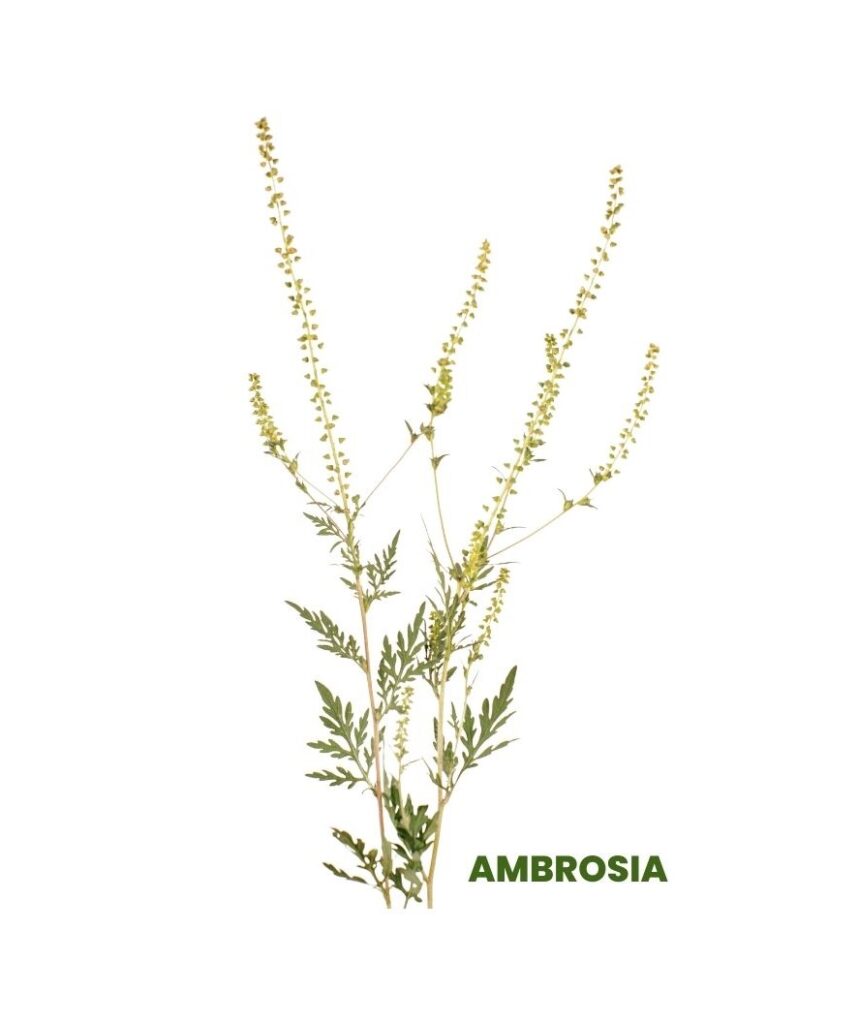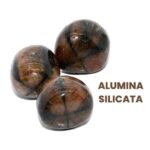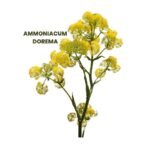Ambrosia, derived from Rag-Weed, is a valuable homeopathic remedy primarily employed for hay fever, offering relief from symptoms like lachrymation and intolerable itching of the eyelids.
It also finds application in certain forms of whooping cough, respiratory tract obstructions, various types of diarrhea (especially during summer), and dysentery.

SOURCE INFORMATION
Common Name: Rag-Weed
- Kingdom: Plantae
- Order: Asterales
- Family: Asteraceae
- Genus: Ambrosia
Ambrosia is a genus comprising more than 40 species of annual and perennial flowering plants.
These plants are native to North and South America but have spread to other parts of the world, becoming particularly notorious in Europe.
Ragweed species are often considered invasive, growing rapidly, and producing abundant pollen.
The pollen from ragweed is a major allergen, causing hay fever in susceptible individuals.
Hay Fever and Allergies
Ambrosia artemisiifolia, commonly known as common ragweed, is a primary culprit in causing hay fever during late summer and early autumn.
The wind-dispersed pollen from ragweed flowers is a potent allergen, triggering allergic reactions in many people.
DRUG PHARMACOLOGY
- Action: Addresses symptoms related to hay fever, respiratory congestion, and gastrointestinal issues.
CHIEF GUIDING SYMPTOMS
- Hay Fever Symptoms
- Watery coryza, sneezing, and a profuse watery discharge.
- Nosebleeds may occur.
- Feeling of nasal and head congestion.
- Irritation in the trachea and bronchial tubes, leading to asthmatic attacks.
- Wheezy cough is present.
- Eye Symptoms
- Smarting and burning sensations.
- Excessive lachrymation.
PARTICULARS
- Respiratory Tract Obstruction
- Symptoms suggest a blocked respiratory tract along its entire length.
- Diarrhea and Dysentery
- Effective in managing various forms of diarrhea, especially prevalent during the summer months, and dysentery.
RELATIONSHIP
- Compare in Hay Fever
- Sabadilla, Wyethia, Succin. ac., Ars. jod., Arundo.
DOSE
- Tincture form, up to the third potency.
- 10 drops in water during and after an epistaxis attack.
- High potencies for hay fever.
FREQUENTLY ASKED QUESTIONS
- What is Ambrosia used for in homeopathy?
- Ambrosia is primarily used for hay fever symptoms, including nasal congestion, sneezing, and eye irritation. It is also employed for certain types of diarrhea and dysentery.
- How is Ambrosia prepared in homeopathy?
- Ambrosia is prepared as a tincture, and it is available in various potencies. The tincture can be used during and after nosebleeds and in the treatment of hay fever.
- What are the key symptoms indicating the need for Ambrosia?
- Key symptoms include watery coryza, sneezing, nasal congestion, lachrymation, and intolerable itching of the eyelids. It is also considered for respiratory obstructions and gastrointestinal issues like diarrhea and dysentery.
Note: This information is for educational purposes and does not replace professional medical advice. Consult a qualified homeopathic practitioner for individualized treatment.













Leave a Reply